Intel Expands 8th Gen Core: Core i9 on Mobile, Iris Plus, Desktop, Chipsets, and vPro
by Ian Cutress on April 3, 2018 3:01 AM ESTThe GIGABYTE H370N-WiFi
One of the motherboards we were sampled early was the GIGABYTE H370N-WiFi. This is GIGABYTE's latest mini-ITX motherboard, and in this case using the H370 chipset - traditionally GIGABYTE's H-series mini-ITX boards implement additional features, such as HDMI 2.0, and in this case, Wi-Fi.
The initial viewing of the board is one implemented more in function than overall style. The four-phase power delivery has a heatsink, the CPU is powered by an 8-pin 12V header, and the full length PCIe slot is shielded. GIGABYTE has two full-length DDR4 slots on this model, using double sided latches, and there are four SATA ports on the right hand side of the board out of a possible six that the chipset supports.
For storage, we get an M.2 2280 slot that sits above the chipset heatsink on the front, and another on the rear:
The two key parts on this motherboard that are going to be a little interesting start with the HDMI 2.0 implementation.
Here GIGABYTE is using the MegaChips MCDP2800 chip as an LSPCon to enable HDMI 2.0 from the processor. This is fairly common for HDMI 2.0, although due to the added LSPCon cost, we still only see it on a few motherboards - mostly GIGABYTE boards.
The other thing to note will be the Wi-Fi implementation. As the H370 chipset will support a native wireless solution, it all comes down to which companion RF model GIGABYTE has chosen. A quick look in the device manager shows this:
Here Intel is using the AC-9560, which is Intel's 2x2 802.11ac Wave 2 (160 MHz) solution - the high cost one.
Another feature on the new motherboards will be the USB 3.1 Gen 2 (10 Gbps) support. Here we see GIGABYTE not bothering with the fastest USB 3.1 implementation - all the ports here are USB 3.1 Gen 1 (5 Gbps) standard - even the port being enabled via a Type-C redriver. This means that this board could be seen as just a refresh of the 200-series version, with only the chipset changed to support the new processors. The motherboard does not have additional front panel headers for 10 Gbps either, meaning that this board uses exactly zero of the four that the chipset supports.
Elsewere on the board we spot the dual NICs, powered by Intel I219-V and Intel I211-AT controllers.
The audio, despite being a 3-plug stack, is powered by the Realtek ALC1220 codec.
In our box with the board, aside from the usual CD/manual/IO shield, we also got two SATA cables and a pair of Wi-Fi antenna. Nothing overly complex.


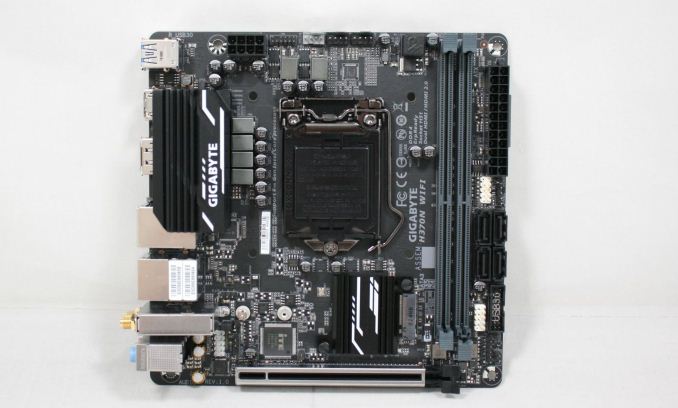
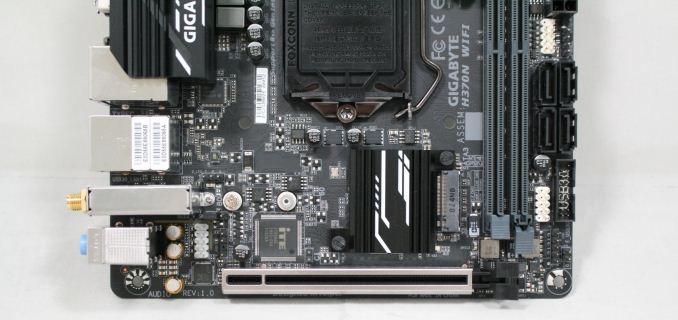
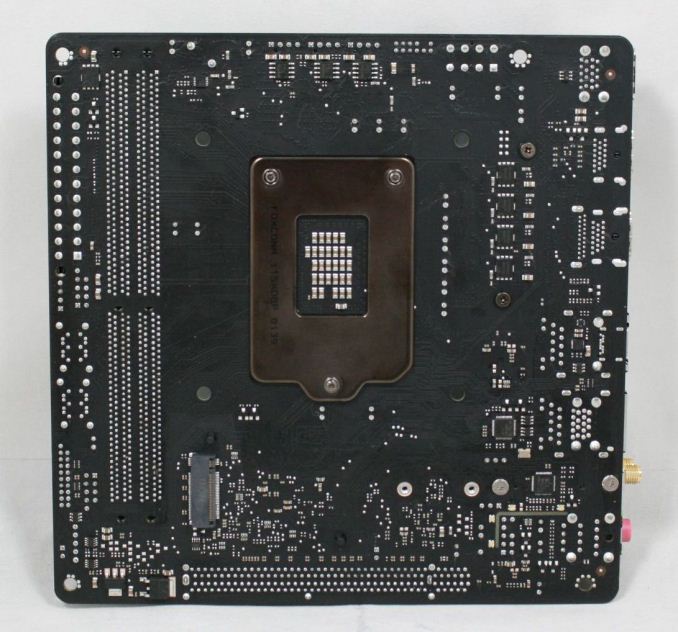
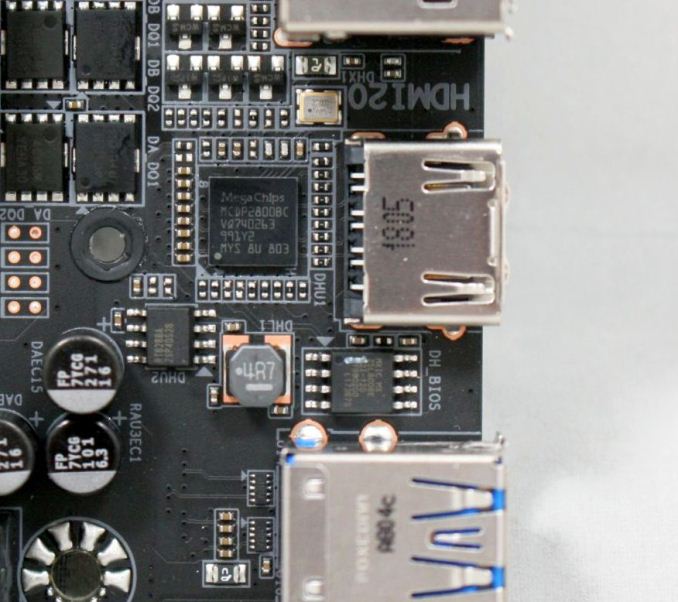
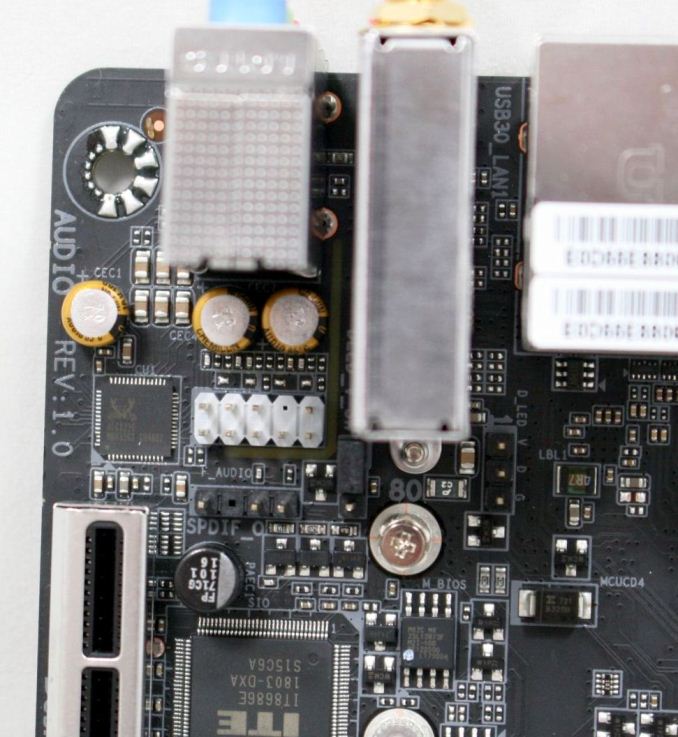
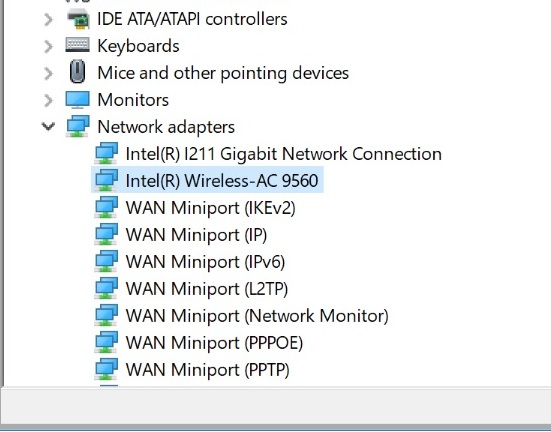

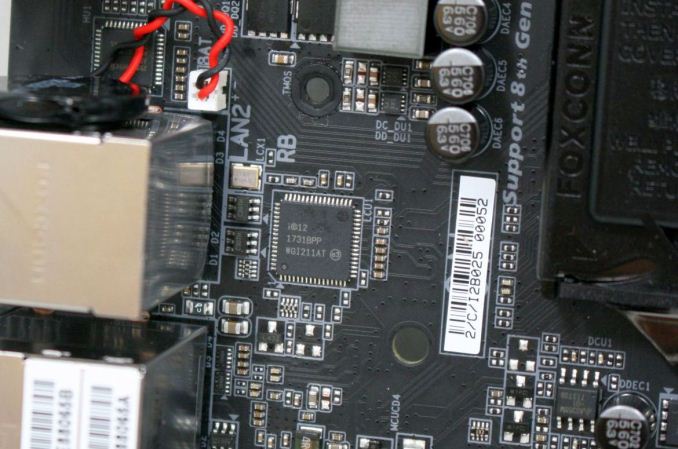

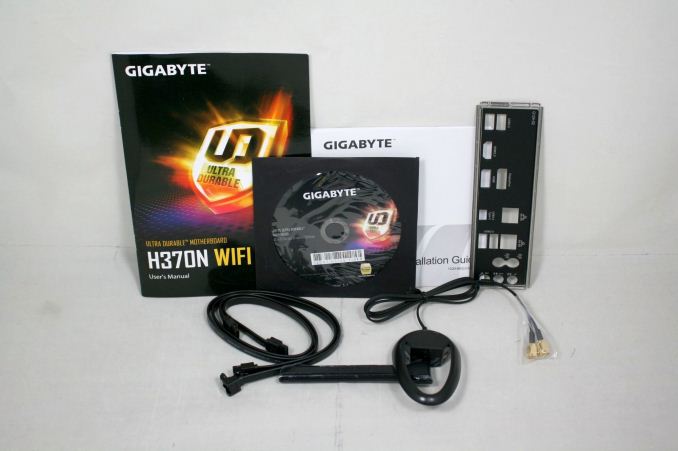














123 Comments
View All Comments
SaturnusDK - Tuesday, April 3, 2018 - link
tl;dr. No consumer line 8-core from Intel yet.Tyler_Durden_83 - Tuesday, April 3, 2018 - link
No need to rush it since Intel still has the performance crown (the best value crown is another matter ofc).SaturnusDK - Tuesday, April 3, 2018 - link
Not really. The 1800X still beat the 8700K in most multi-threaded workloads. Intel has the crown for best performance if all you do is single player gaming at low resolution. That's about it. Multi-threaded workload and professional workloads Intel is behind. Gaming at higher resolution or streaming it's really a toss up.StevoLincolnite - Tuesday, April 3, 2018 - link
Well. There is a rush.There are those who are on Westmere/Sandy Bridge/Ivy Bridge who have 6 core processors but are looking to upgrade, like myself.
Intel's 6-core mainstream parts aren't really attractive considering I have had a 6-core processor for almost a decade, sure... I will gain a massive increase in single threaded performance... But it's nothing that a little bit of overclocking to 4.8ghz on my 3930K that couldn't make up some of that difference.
Besides... In heavy threaded scenario's, AMD beats Intel.
I guess I am waiting another year to upgrade. Another year Intel doesn't get my cash.
Probably not a bad thing at the moment anyway with the price of DRAM.
goatfajitas - Tuesday, April 3, 2018 - link
"Westmere/Sandy Bridge/Ivy Bridge who have 6 core processors"But those were the extremely high end expensive CPU's back then. Those dont compare with todays standard consumer models, they compare with the Core i9 which has 10 cores https://ark.intel.com/products/123613/Intel-Core-i...
FunBunny2 - Tuesday, April 3, 2018 - link
"In heavy threaded scenario's, AMD beats Intel."which matters once we have more than a handful of multi-threaded apps. running discrete apps in background really isn't the same thing.
Nozuka - Tuesday, April 3, 2018 - link
wow their lineup is such a mess now...close - Tuesday, April 3, 2018 - link
And the mess doesn't stop there:"It is worth noting that the 35W TDP value is only valid when the CPU is at its base frequency, which in this case is 2.4 GHz"
So... a meaningless figure. Might as well go with "0W TDP... but only valid when completely off".
euskalzabe - Tuesday, April 3, 2018 - link
Yup!goatfajitas - Tuesday, April 3, 2018 - link
Yeah, that chart on page 1 says it all. The 8th gen is a huge mess. Fortunately for Intel, most of their customers only know "i7 = best" and buy it anyhow.